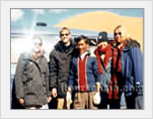
Kashgar Old Town Guide
-Travel to Kashgar Old Town Located in Artux, on the Gobi desert, 30 kilometers from downtown Kashgar, Xinjiang Uygur Autonomous Region, Kashgar Old Town is an oasis city. It is in Kashgar that Uyghur People account for up to 90 percent of the population, which is one of the reasons that locals insist that you haven’t seen Xinjiang if you haven’t seen Kashgar.
Located in Artux, on the Gobi desert, 30 kilometers from downtown Kashgar, Xinjiang Uygur Autonomous Region, Kashgar Old Town is an oasis city. It is in Kashgar that Uyghur People account for up to 90 percent of the population, which is one of the reasons that locals insist that you haven’t seen Xinjiang if you haven’t seen Kashgar.
Kashgar ancient town contains a large group of Uygur residential houses. The Old Town city is now home to 630 homes with more than 2450 people, all of whom are Muslims and the old town area of Kashgar is the best-preserved example of a traditional Islamic city to be found anywhere in Central Asia.
The town has a history of over 2,000 years. It was said that Banchao, Eastern Han's envoy to the Western Region once stayed here on his way. It was a summer palace during the Kalahan Dynasty. Covering 4.25 square kilometers and inhabited by 126000 people, the Old Town District is the soul of the Kashgar, reflecting both the city's ancient past and the peaceful present.
 The Kashgar Old Town is famous for its fascinating architectural style and winding narrow streets. Most houses are soil-timber or masonry-timber structures, and some have been standing for over 100 years. The residential area has a long history and most of ancient houses have existed for a few centuries. Most homes are handed down from generation to generation for over 300 to 400 years. The structure roof, walls, doors, windows and colors remain unchanged for centuries. One home often reflects the history of a clan which is full of fertilities, developing, vicissitude and descendant continuance.
The Kashgar Old Town is famous for its fascinating architectural style and winding narrow streets. Most houses are soil-timber or masonry-timber structures, and some have been standing for over 100 years. The residential area has a long history and most of ancient houses have existed for a few centuries. Most homes are handed down from generation to generation for over 300 to 400 years. The structure roof, walls, doors, windows and colors remain unchanged for centuries. One home often reflects the history of a clan which is full of fertilities, developing, vicissitude and descendant continuance.
Many homes are passed down through seven or eight generations. Due to the Uygur's strong belief of ancestors some large houses have up to 20 rooms on two levels. In wing-rooms on either side of the main dwelling several generations live in the same courtyard which is actually the realization of four generations under one roof.
 Each house has a courtyard, some big and some small, the size of which is due to the terrain. Similarly, all the yards grow the Muslim-favored trees and flowers, such as mulberry, figs, megranate, almond, grape, rose, China rose. The yards are heavily shaded, proving a tranquil environment for relaxing and refreshing. Inside bigger yards, the owner even built up a pergola for grape vines.
Each house has a courtyard, some big and some small, the size of which is due to the terrain. Similarly, all the yards grow the Muslim-favored trees and flowers, such as mulberry, figs, megranate, almond, grape, rose, China rose. The yards are heavily shaded, proving a tranquil environment for relaxing and refreshing. Inside bigger yards, the owner even built up a pergola for grape vines.
Streets in the district are criss-cross, dwellings are flexibly distributed. It is the only labyrinth urban block featuring Islamic culture in China. Many old names of the lanes, which are titled according to the functions, continue to use today, such as cooking oil market, soil potter, gold-silversmith district, and the like.
Kashgar Old Town is a lively scroll painting of Uygur folk custom. Walking through the narrow lanes of the old city is walking through the living history. Craftswomen stitch doppas, the traditional four-cornered hats. Crop-haired girls in bright frocks and mismatching plastic sandals giggle and shove as they see strangers; then sing and dance for their audience. The real pleasure here is to wander and watch.
More Attractions in The Silk Road
- Xinjiang Museum
- Heavenly Lake
- Tianshan Mountain
- The Khazak Yurts
- The Erdaoqiao Bazaar of Urumqi
- The Southern Pasture
- Abakh Khoja Tomb of Kashgar
- Id Kah Mosque of Kashgar
- Karakuri Lake
- Thousand Buddha Cave
- Flaming Hill
- The Ancient City of Gaochang
- The Karez Well
- The Emin Minaret
- The Grape Valley
- The Astana Tombs
- Tianshui Maijishan
- Kashgar Old Town
Your Question & Quick Answer*We welcome and appreciate your questions & reviews
Booking Procedures | Terms & Conditions | Payment Methods | Links | Site Map | About Us | Contact Us | Travel Agent
Copyright 2008, All rights reserved.. itourbeijing.com professional china travel guide and china travel service
TEL: 86-10-85711972 (Universal) 1-888-288-9328 (North America) E-mail: contact@itourbeijng.com
Tours Index | China Tours | Beijing Tours | Xi'an Tours | Shanghai Tours | Guilin Tours | Tibet Tours
China Travel | Beijing Travel | Shanghai Travel | Xi'an Travel | Guilin Travel |Beijing Map
China Golf | Beijing Golf | Shanghai Golf | Xiamen Golf | The Great Wall Travel | Yangtze Cruise | Travel Picture



